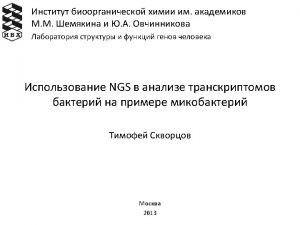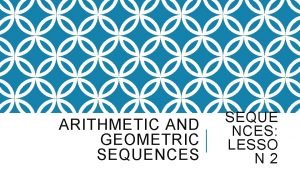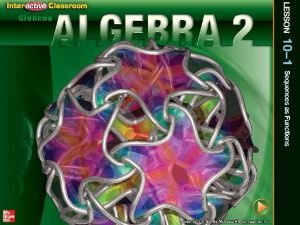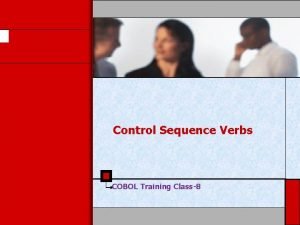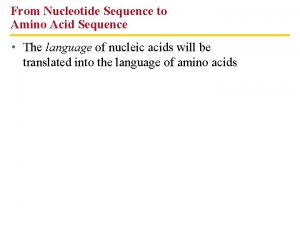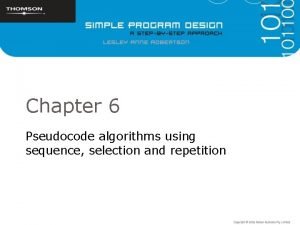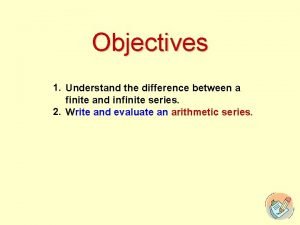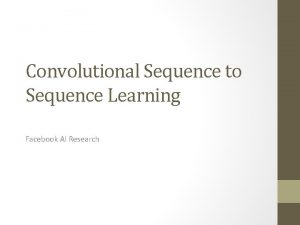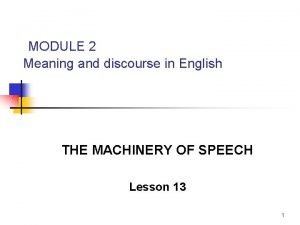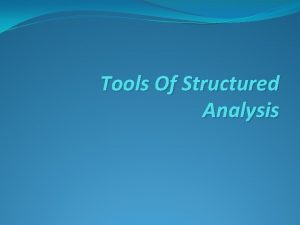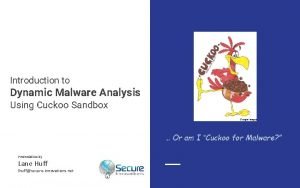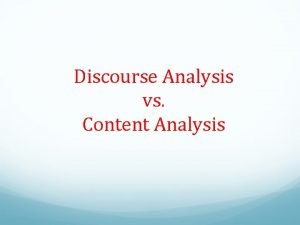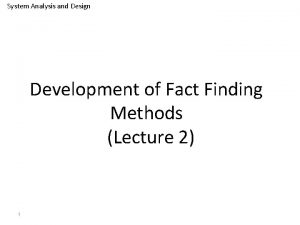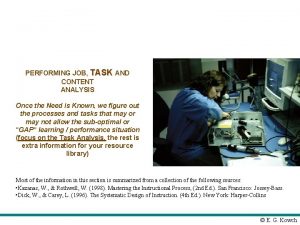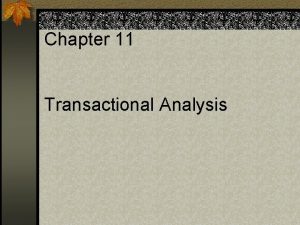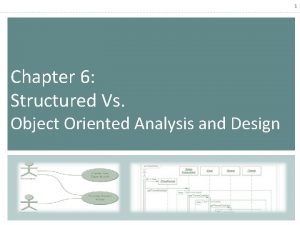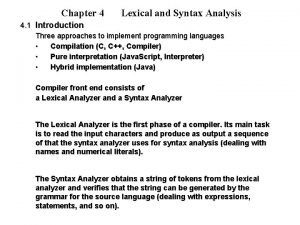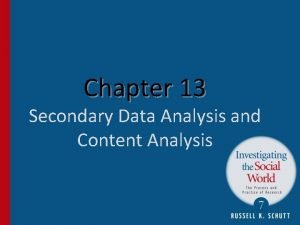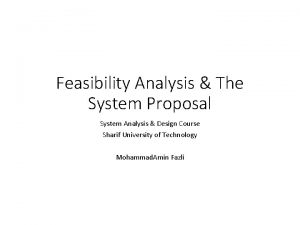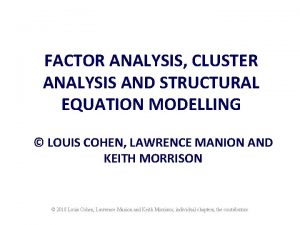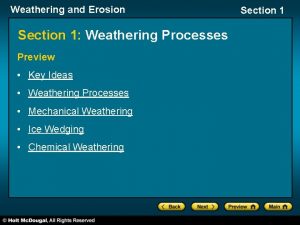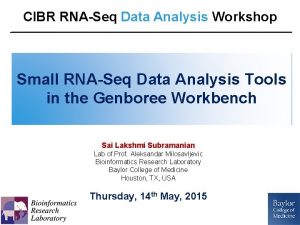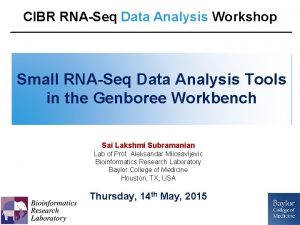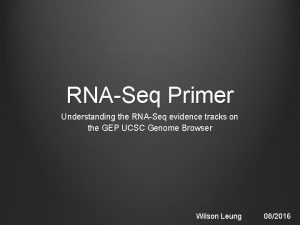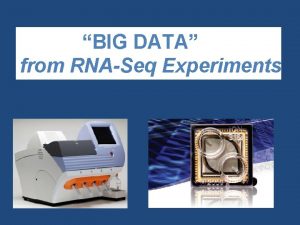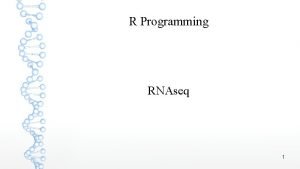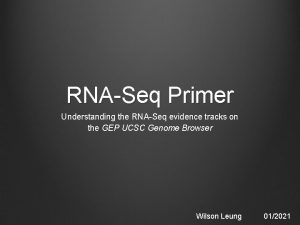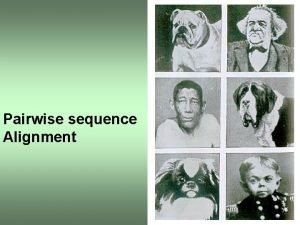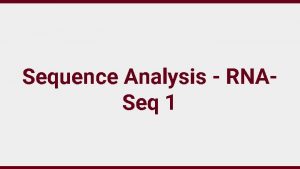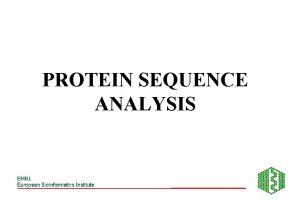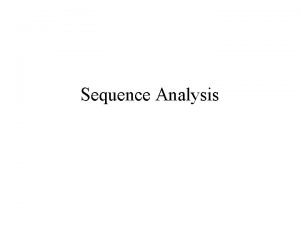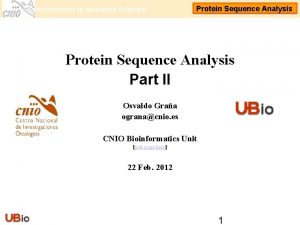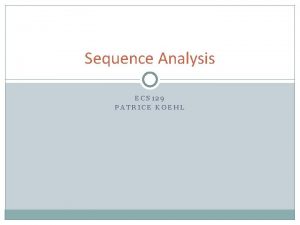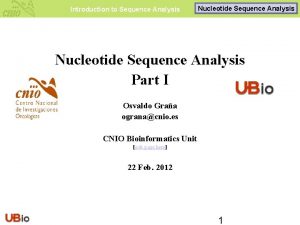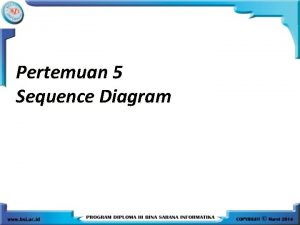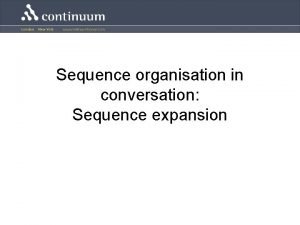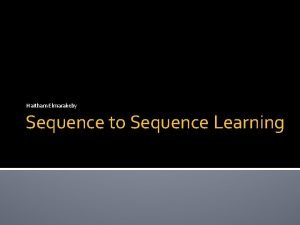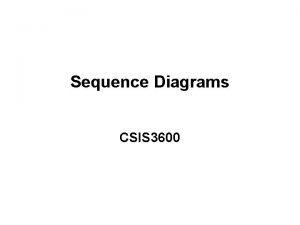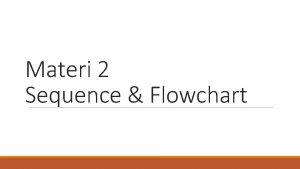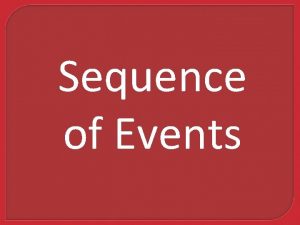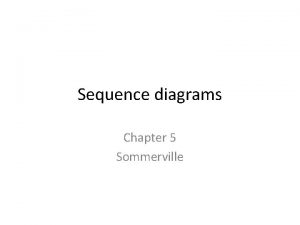Sequence Analysis RNASeq 2 RNASeq Identify sequence of



























- Slides: 27

Sequence Analysis - RNASeq 2

RNA-Seq ● Identify sequence of RNA molecules ● “Unbiased” - possible to sequence any molecule in sample ● Molecules sequenced in proportion to relative abundance in sample ● Most often used for gene abundance estimation

Common Types of RNA-Seq Analyses ● Sequence based ○ ○ Transcriptome reconstruction Splicing analysis Gene fusion discovery Coding variants ● Abundance based ○ Differential expression ○ Allele-specific expression (with genotyping)

Transcriptome reconstruction ● Given RNA fragments, recover original transcript ● Two approaches: ○ De novo - no reference transcriptome available ○ Reference or genome guided - reference available ● Very challenging with short reads!

De novo transcriptome reconstruction

De novo transcriptome reconstruction

Concept: Spliced Alignment ● Coding sequences interrupted by introns ● m. RNA molecules have introns excised ● Some reads span splice junctions ● Spliced alignment aligns junction or spliced reads https: //discoveringthegenome. org/discovering-genome/rna-sequencing-up-close-data/spliced-alignment

Concept: Spliced Alignment ● Splicing-aware programs: ○ STAR, Top. Hat ● Splicing unaware programs: ○ bwa, bowtie, most others ● De novo - use only genome sequence ● Transcriptome guided - use known splice junctions to guide alignment

Concept: m. RNA Isoforms ● Isoform: pattern of exons/transcribed sequence

Alternative Splicing (AS) Analysis ● Detect and/or quantify isoforms ● Different AS types ● Examine pattern of exons in spliced reads ● Methods: ○ ○ Whippet MISO r. MATS IRFinder, and many others https: //www. ncbi. nlm. nih. gov/books/NBK 19730/figure/A 1150/

Alternative Splicing (AS) Analysis ● Read support: # of reads containing splice junction ● Grey areas → overall aligned read depth ● Black areas → spliced reads ● These have minimum 10 supporting reads per splicing event https: //journals. plos. org/plosone/article? id=10. 1371/journal. pone. 0141298

Reference guided reconstruction

Reference guided reconstruction

Gene Expression (RNA Abundance) ● Measure relative abundance of RNA species ● # reads mapping to a gene is proportional to # of molecules transcribed ● Example: ○ Gene A = 5, Gene B = 10, Gene C = 10 reads ○ Gene A is about half as abundant Gene B ○ Gene A and Gene C have about the same abundance Gene A Gene B Gene C

Bag of Fragments Analogy ● Reads are samples drawn from the distribution of all RNA fragments Metaphorical bag All RNA Fragments (billions and billions) ● Drawn in proportion to frequency ● High abundance transcripts drawn frequently ● Low abundance transcripts might not be drawn at all (black read) ● More reads sequenced → more chance to draw low abundance transcripts ● Absence of evidence is not evidence of absence!

RNA-Seq vs Microarray RNA-Seq compared to microarray: ● ● ● “Unbiased” - de novo sequences Larger dynamic range Information rich More complex data Much larger data More expensive

High depth RNA-Seq Low depth RNA-Seq Microarray Dynamic Range - Detection Limits

Gene Expression Analysis Strategies ● Align+count ○ Explicit alignment against genome ○ Count reads aligned to known loci (e. g. genes) ● Quantify ○ “All-in-one” approach ○ Quasi-alignment (i. e. “good enough” alignment) against transcriptome only ○ Statistical model estimates abundance

RNA-Seq Analysis: Align and Count 1. Align against reference genome 2. Compare alignments with annotation 3. Count # of reads within desired features (e. g. exons, coding sequence) 4. Sum to transcript or gene level 5. Read counts are estimates of abundance

Concept: Multimapping Reads ● Paralogs, repetitive sequence may transcribe identical RNA ● Multimapping read: read that maps equally well to multiple loci ● Can cause abundance estimation bias ● Mitigate by: ○ Filtering out multimappers ○ Limit reads to aligning to a maximum # of loci (e. g. 1, 10) ○ Multimap resolution methods (e. g. mmr, ORMAN)

Abundance Estimation (Quantification) ● Quasi- (or pseudo-)alignment: map reads to sequences without explicit alignment ● Must build reference transcriptome ● Statistical model performs abundance inference ● Handles multimapping reads implicitly ● Similar accuracy, faster than align+count

Expression Analysis Strategies Summary ● Align+count: ○ Spliced alignment methods: STAR, Top. Hat ○ Counting methods: htseq, featurecounts, VERSE ○ Advantages: flexible, accurate, whole genome ○ Disadvantages: slow, many parameters to choose ● Quantify ○ Methods: salmon, kallisto ○ Advantage: very fast, accurate, handles multimaps ○ Disadvantage: transcriptome only

Differential Expression (DE) ● Start with expression matrix of genes x sample counts/estimates ● Which genes have counts associated with variable of interest, e. g. case vs control? ● Each gene will have ○ significance (e. g. p-value) ○ Effect size (e. g. log 2 fold change)

Concept: Count Normalization ● ● # of reads differ between libraries Counts proportional to library size Must be normalized for samples to be comparable Un-normalized counts called raw counts

Count Normalization Strategies ● DESeq 2 - median of geometric mean count ratio ● FPKM/RPKM - fragments (reads) per kilobase per million reads ○ Divide each gene count by length of gene*10^6 ● Others proposed, these two most common Dillies, M. -A. et al. A comprehensive evaluation of normalization methods for Illumina high-throughput RNA sequencing data analysis. Brief Bioinform 14, 671– 683 (2013). http: //bib. oxfordjournals. org/content/14/6/671. full

Modeling Count Data ● Count data are not normally distributed: ○ Non-negative integers ○ Mean-Variance dependence ○ Long upper tail ● Modeled as Negative Binomial Distributed ● Negative Binomial Regression Utilized for DE

Differential Expression Methods ● Current state of the art: ○ DESeq 2 (Negative Binomial Regression) ○ edge. R (Negative Binomial Regression) ○ Count transformation + limma (linear regression) ● Deprecated: ○ Cufflinks (Negative Binomial Regression) ● These methods perform normalization
 Rnaseq illumina
Rnaseq illumina Explain embedded product development life cycle
Explain embedded product development life cycle How to tell if a sequence is arithmetic
How to tell if a sequence is arithmetic How to identify an arithmetic sequence
How to identify an arithmetic sequence A.determine whether the sequence is arithmetic
A.determine whether the sequence is arithmetic Control verbs
Control verbs Nucleotide to amino acid
Nucleotide to amino acid Pseudocode sequence
Pseudocode sequence Differentiate finite from infinite sequence
Differentiate finite from infinite sequence Convolutional sequence to sequence learning.
Convolutional sequence to sequence learning. Module 2 meaning
Module 2 meaning Insertion sequence in conversation analysis
Insertion sequence in conversation analysis Structured analysis tools in system analysis and design
Structured analysis tools in system analysis and design Cuckoo sandbox
Cuckoo sandbox Difference between content and discourse analysis
Difference between content and discourse analysis Differences between contrastive analysis and error analysis
Differences between contrastive analysis and error analysis Types of intralingual errors
Types of intralingual errors Fact-finding techniques in system analysis and design
Fact-finding techniques in system analysis and design Difference between task analysis and content analysis
Difference between task analysis and content analysis Transactional analysis
Transactional analysis Ooad vs oop
Ooad vs oop Lexical and syntax analysis
Lexical and syntax analysis Data quality is always a concern with secondary data
Data quality is always a concern with secondary data Feasibility matrix example
Feasibility matrix example Kmo test
Kmo test Ways to show respect to others
Ways to show respect to others What is a theme in a story example
What is a theme in a story example Identify three agents of mechanical weathering
Identify three agents of mechanical weathering
